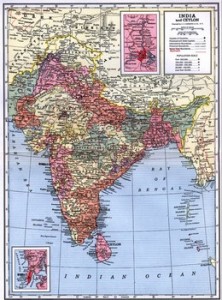
Like all the languages of India, it belongs to the Indo-European family of languages; it is spoken in the north, center and northwest of India. To understand it a little better, we could say that is a combination of two official languages: Hindi (one of India’s official languages) and Urdu (Pakistan’s official language).
And as one might expect, it is one of the most widely spoken Indian languages. Hindustani is spoken in India, Pakistan, Fiji, Guyana, Malaysia and Suriname.
As a colorful reference, we could say that it is the “neutral Hindi,” which is spoken in “Bollywood” films (India’s Hollywood equivalent).
This language was born of the need for communication between the peoples of India and the Persians, Turks and Arabs who had migrated to the north of India back in the thirteenth century.
For this reason, the Hindustani has benefitted from the Persian contributions. Here are just a few examples in different areas of discourse:
– Government: adalat (court), daftar (office), sipahi (soldier), shahar (city), kasba (town), zila (district);
– Clothing: kamiz (shirt), shal (scarf);
– Cosmetics: itra(perfume), sabun (soap);
– Furniture: kursi (chair), mez(table);
– Professions: chaprasi (common laborer), haqim (physicist), dalal (shareholder).
Hindustani also used Persian suffixes to create new words; thus, the first part of the term comes from Khariboli (western Hindi dialect) and the second part from Persian, for example: rajmahal (palace: raja = noble + mahal = home, place).
Currently, there is a simplified version of Hindustani, which can be heard in Calcutta and other cities of India, where Hindi is not the prevalent language. And even many Urdu speakers use Hindustani to communicate.
Schedule a Call
CONTACT US
Toll Free: +1 (877) 605-7297
Fax: +1 (888) 883-6408
Sales Team Inquiries:
sales@trustedtranslations.com
Production Team Inquiries:
production@trustedtranslations.com
Jobs:
Application Forms
© 2024 by Trusted Translations All rights reserved.
